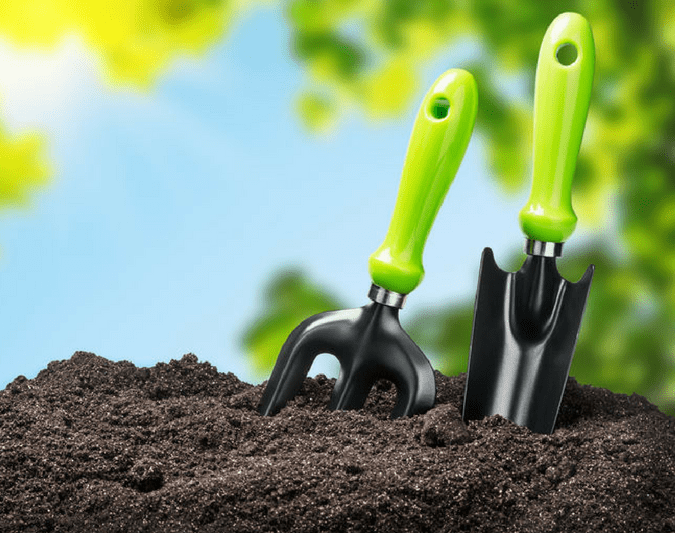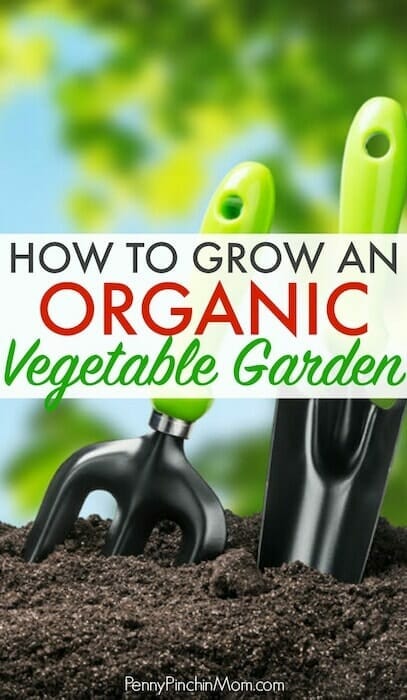Having an organic vegetable garden means that everything grown in it is free of synthetic insecticides and pesticides. Gardeners have grown organically for hundreds of years, and it wasn’t until recently that non-organic ways were brought back into mainstream farming and backyard gardening. Learn how to grow an organic vegetable garden easily and have the best-tasting vegetables around.
Growing fruits and vegetables in your garden is relatively simple. But, if you want to ensure that your products are completely organic, there are different things you need to do. Sure, you can buy organic foods in the store, but there is nothing like growing them in your own backyard.
It is essential that you have the tools you will need for your garden including gloves, trowel, weeding tools and more. Then, when you are ready, dig in and let’s get dirty!
GROWING AN ORGANIC VEGETABLE GARDEN
SEEDS
It is important that the seeds are certified organic or transplants grown from organic seeds. The best seeds are those that are both organic and heirloom. That means they have not been genetically modified (non-GMO). Carefully look at the seed packet to make sure that there are no indicators that it may be a GMO seed.
These seeds will produce vegetables that will not be the same size, but the flavors will be amazing!!
GARDEN BEDS
Many people choose to use raised beds for their organic gardens until the can amend the regular garden soil enough to eradicate any leftover pesticides. When making the raised bed, buy pesticide-free untreated wood or the chemicals in the treated wood will leach into your garden.
Old railroad ties are made with chemically treated wood so don’t use those when building your organic garden. Bricks and concrete blocks also make great walls for a raised bed garden.
FERTILIZERS
Organic fertilizers are a vegetable plants best friend! One of the best benefits of using natural fertilizers is that a plant can only uptake the nutrients it needs at that moment.
With synthetic fertilizers, if you accidentally apply too much to the plant, it can burn the plant’s roots or leaves. If the fertilizer bags say anything like 10-10-10 or 10-15-10 then you know it is synthetic. Natural fertilizers won’t come in perfect combinations of nutrients, but look closer to 4-12-0 or 13-1-0.
These three numbers represent the amount of Nitrogen (N), Phosphorus (P) and Potassium (K) or NPK in the bag. Nitrogen benefits the plant’s leaves, Phosphorus helps the plant’s roots to grow and promotes flower and fruit production, and Potassium helps the plant to withstand environmental conditions like cold, heat, or drought.
PESTICIDES
Instead of using pesticides in the garden, use plants that deter pests or use homemade insecticide soap. The best plants to have in the garden to naturally prevent unwanted insects or critters are marigolds, onion, garlic, and gopher purge.
If you are growing any vegetable from the squash family such as cucumbers or pumpkins, plant Nasturtiums around so that they will attract the harmful pests. Nasturtiums are flowers that are edible and will often keep the bugs away from your plants.
A healthy organic garden has both good and bad insects. This creates a balance that is needed to help your garden grow.
WATERING
Using rainwater is the final step in creating an organic garden. You can use a rain barrel to trap the water when it rains. Rainwater has essential vitamins and minerals not found in tap water. Harvesting rainwater and then using it to water your veggie garden is the perfect way to get those micronutrients to your vegetables.
These are simple tips anyone can follow and know that you are on your way to having your very own organic vegetable garden.

